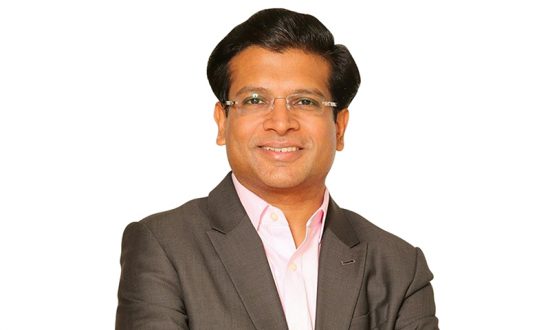One of India’s most successful young entrepreneurs and amongst its foremost digital experts, Dilip Kumar Modi is the Chairman and Group CEO of DiGiSPICE Technologies and Founder of Spice Money. Dilip is a second-generation entrepreneur who has pioneered several new innovations and built a strong portfolio of businesses within the Indian mobility and technology space during his stellar career spanning over two decades. Dilip’s journey as an entrepreneur started early on in life. Dilip always believed that technology will be a key enabler for achieving inclusive growth in the world and started several innovative, technology-driven businesses. Today, he is furthering the cause for financial inclusion and empowerment of rural India with Spice Money.
The budget presented by the finance minister focused on four pillars of development – inclusive development, productivity enhancement, energy transition, and climate action. The Budget gives a blueprint of the economy from India at 75 to India at 100. It is extremely heartening to see the digital economy and fintech technology-enabled development being a key focus area for Budget 2022-23. India’s economy is expected to grow 9.2% in the current financial year, aided by the base effect of 7.3% contraction last year, according to the first advance estimates by the National Statistical Office (NSO).
Digital payments have grown five folds from 1,004 crores in 2016-17 to 5,554 crore in 2020-21. Digitization or digitalization of banking services has established a robust network that supports a fast disbursement of banking services across the world. Digital banking services have enabled India to be more operative in reducing the transaction gaps between rural and urban areas. The awareness about cashless transactions has led to a complete transformation in online-banking services. Government initiatives, as well as the effort put in by banks (both private and public) in implementing digital services like internet banking, mobile banking, payment of various utility bills, online-ticket booking, Digi-lockers for investors (investment), etc., have created a way of technical significance among the agricultural population. Favorable network conditions also play a serious role in making digital banking services more triumphant in both rural and urban India.
The Government’s new initiative to transform 1.5 lakh post offices with core banking system, will pave way for financial inclusion and access to accounts through net banking, mobile banking, ATMs and also provide online transfer of funds between post office accounts and bank accounts. This can be helpful especially for farmers and senior citizens in rural areas enabling interoperability and providing financial freedom.
The Budget also highlighted that in order to mark the 75th year of Independence, 75 Digital Banking units will be set up in 75 districts of the country by scheduled commercial banks. This will help to bridge the banking gap in rural parts of India and also enable us to take a step further towards our goal of financial inclusion through rural empowerment. The financial support for the digital payments ecosystem announced in the previous budget will continue with 2022-23 as well which will encourage further adoption of digital payments. There will also be a continued focus to promote the usage of digital payment platforms. Not only this, the plan to develop India’s own digital currency using blockchain technology could be a game-changer and a huge step towards a digitally powered India.
In order to continue this home run of the larger digital payments gamut, and to keep charting our way towards an inclusive and robust digital economy, it is imperative that there remains sustained encouragement for smaller businesses as well. There are certain measures that can be taken or re-implemented by the MeitY (Ministry of Electronics and Information Technology) in order to ensure smaller businesses are, and remain, a significant part of this evolution.
The BHIM Aadhaar incentive scheme had helped merchants offset operational expenses and had led to spontaneous and enthusiastic adoption. Each BHIM Aadhaar transaction was provided with an incentive of 0.5% of the transaction value upto Rs 10,000 with a minimum incentive of Rs 2/- and maximum incentive of Rs 50/- per transaction. Maximum incentive was restricted to Rs 2,000/- per merchant per month. Re introduction of this scheme might help fresh, continued or renewed adoptions by small businesses.
The existing MDR of 0.25% on Aadhaar Pay might be acting as a deterrent for adoption among small merchants. Making this a “nil” MDR product like in the case of UPI & Rupay might help in greater adoption.
Most BHIM Aadhaar Pay merchants have no branding at their shops. There are currently no advertisements of BHIM Aadhaar Pay on any medium. An awareness building campaign promoting this mode can be undertaken with key stakeholders including MeitY and NPCI, in order to further popularise the system.
Small businesses need an upfront capital expenditure of around Rs 2,000/- (one-time) to buy a STQC certified fingerprint bio-sensor and are required to pay an annual fees up to Rs 250/- (for RD services). Covering this expenditure as a subsidy under the PIDF scheme, operationalised by the Reserve Bank of India from January 01, 2021, will be a welcome move for the merchants, and help in accelerating greater adoption.
Non-financial transactions like balance inquiry are a precursor for building trust in digital payment instruments, but it is currently not offered as a product under Aadhaar Pay as per the procedural guidelines of NPCI and acquiring banks. Introduction of this feature might lead to greater trust thereby leading to a greater success rate of Aadhaar Pay.
As with all predictions for the year ahead along with the fast-changing nature of the fintech industry, everything discussed above is in fact just the tip of the iceberg of what might be on the cards in terms of fintech trends in 2022. What we can say for sure, however, is that continuing on 2021’s progress, building and maintaining close alliances with fintech, talent, or building cutting-edge technologies to serve new demographics and emerging sectors is the key – the longer term is looking bright for fintech.


